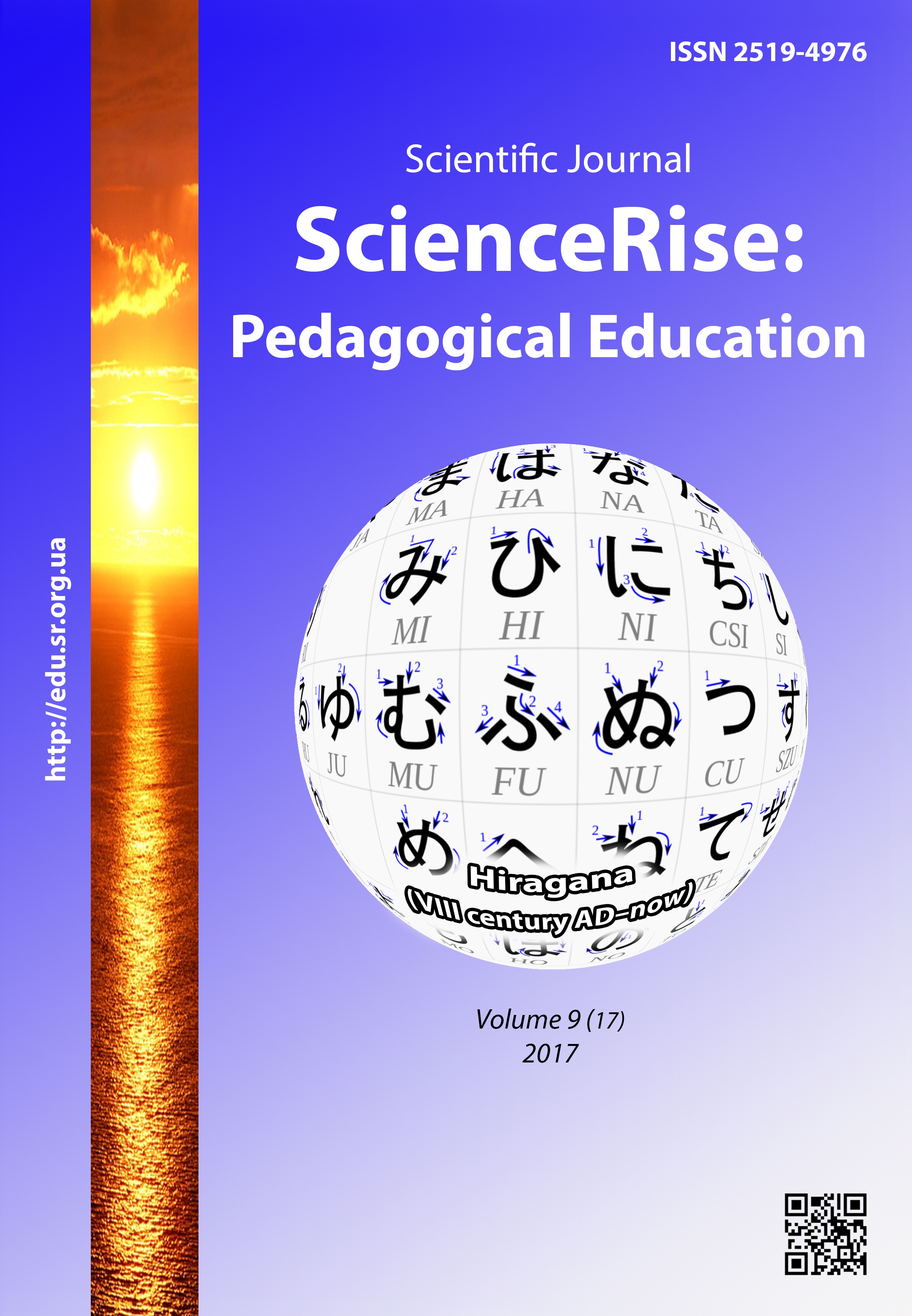Retrospective analysis of the content of teaching methods of natural science textbooks of the beginning of XX century
DOI:
https://doi.org/10.15587/2519-4984.2017.110798Keywords:
methodical textbook of natural science, professional training of teachers, readiness to the nature protecting activityAbstract
Today it is told that future teachers of biology must be oriented on forming pupils’ social activity, responsibility and ecological consciousness, readiness to take part in solving problems of environment protection and society development, recognition of the importance of the stable development for future generations.
The special place in the process of professional training of future teachers is occupied by the methodical competence, so the quality of learning-methodological textbooks. The problem of the educational process optimization remains in the center of modern teachers’ attention. Taking into account this fact, there were analyzed textbooks on the method of teaching natural science of the beginning of XX century (1902–1914). Let’s note that they contain texts and extra-texts components, blocks of questions, differentiated tasks for the individual and group work, complex of stimulating steps for the self-development of professional skills, formation of practical abilities and so on, topical also for today.
We determined certain peculiarities as a result of the analysis. The content of the textbook, edited in 1902, was structured according to seasons and natural phenomena. For example, the topic of components of inanimate nature (soil, loam, sand, stones, gravel, gneiss) was studied in the section “Autumn”. This topic was considered in the separated section, named “Mineralogy” in the methodical textbook of 1907year.
The edition of 1914 contains the separate section that deals with the laboratory method, the content of practical activities and lessons that provide laboratory works was elucidated.
Let’s note that the special attention was paid to the role of nature in the human life by all three authors.
We consider the analyzed textbooks as a valuable contribution to the educational sphere and important element in the process of professional training of future teachers of biology
References
- Educational program for general educational. «Biology. 6-9 classes». Available at: http://mon.gov.ua/activity/education/zagalna-serednya/navchalni-programi-5-9-klas-2017.html
- Zahal'ni vymohy do zmistu ta oformlennya navchal'nykh posibnykiv ta navchal'no-metodychnoi literatury [General requirements for the content and design of teaching aids and educational-methodical literature] (2014). Zhytomyr, 56.
- Rudyshyn, S. D. (2015). Osoblyvosti formuvannya v uchniv pochatkovoyi shkoly pryrodnycho-naukovoi kartyny svitu [Specific Features of Forming natural sciences picture of the world of pupils of elementary school]. Pedagogy and psychology, 1, 45–49.
- Baybara, T. M. (2008). Metodyka vyvchennya pryrodoznavstva v pochatkovykh klasakh [Methodology of teaching natural science in elementary school]. Kyiv: Veselka, 334.
- Bida, O. A. (2000). Metodyka vykladannya [Teaching method]. Kyiv: Perun, 400.
- Bobyl'ov, Yu. P. (2003). Kontseptsiyi suchasnoho pryrodoznavstva [Concepts of Modern Natural Science]. Kyiv: Tsentr navchalnoi literatury, 244.
- Verzylin, M. M., Korsuns'ka, V. M. (1980). Zahal'na metodyka vykladannya biolohii [General Methodology of Teaching Biology]. Kyiv: Radianska shkola, 352.
- Holіkov, V. I. (1902). Uroky i besedy po estestvovedenyu [Lessons and conversations of natural sciences]. Moscow, 195.
- Krasnov, M. M. (1907). Metodyka estestvoznavstva [Methodology of natural sciences]. Moscow: Izdanie A. V. Pavlova, 180.
- Pinkevych, A. (1914). Metodyka nachalnoho kursu estestvovedenia (pryrodoznavstvo) [Methodology of the initial course of natural science]. Saint Petersburg, 190.
Downloads
Published
How to Cite
Issue
Section
License
Copyright (c) 2017 Valentyna Samilyk

This work is licensed under a Creative Commons Attribution 4.0 International License.
Our journal abides by the Creative Commons CC BY copyright rights and permissions for open access journals.
Authors, who are published in this journal, agree to the following conditions:
1. The authors reserve the right to authorship of the work and pass the first publication right of this work to the journal under the terms of a Creative Commons CC BY, which allows others to freely distribute the published research with the obligatory reference to the authors of the original work and the first publication of the work in this journal.
2. The authors have the right to conclude separate supplement agreements that relate to non-exclusive work distribution in the form in which it has been published by the journal (for example, to upload the work to the online storage of the journal or publish it as part of a monograph), provided that the reference to the first publication of the work in this journal is included.








